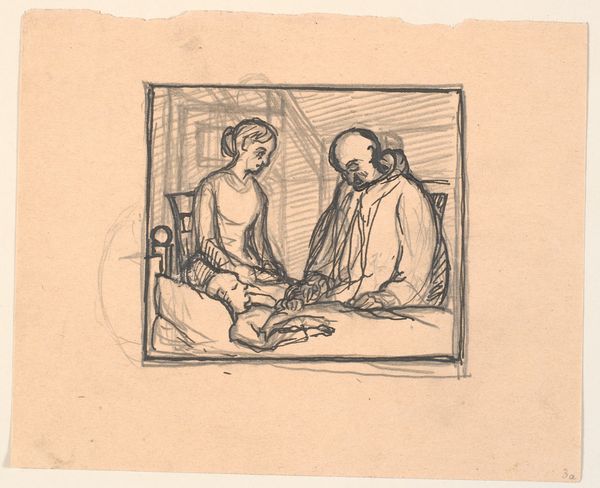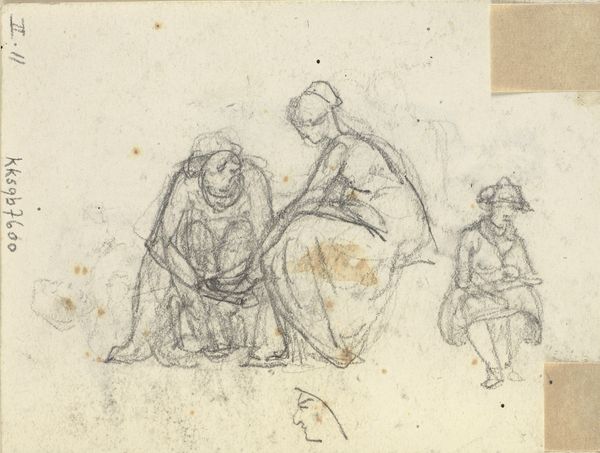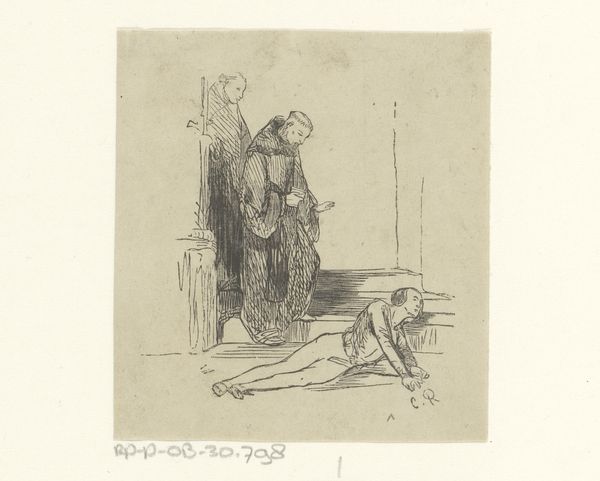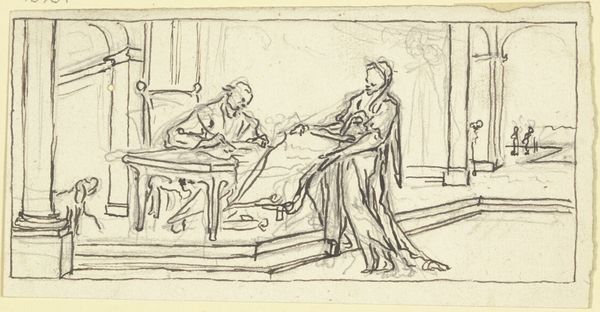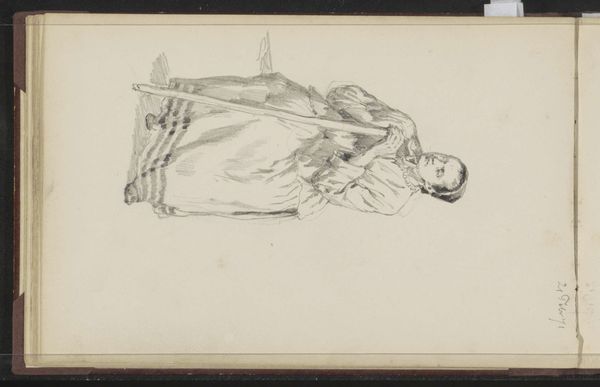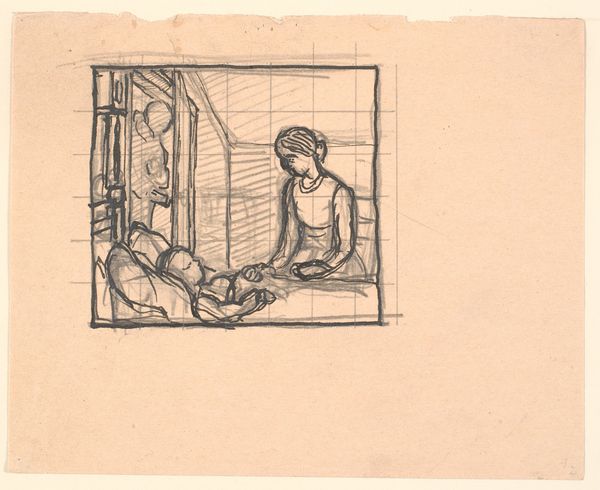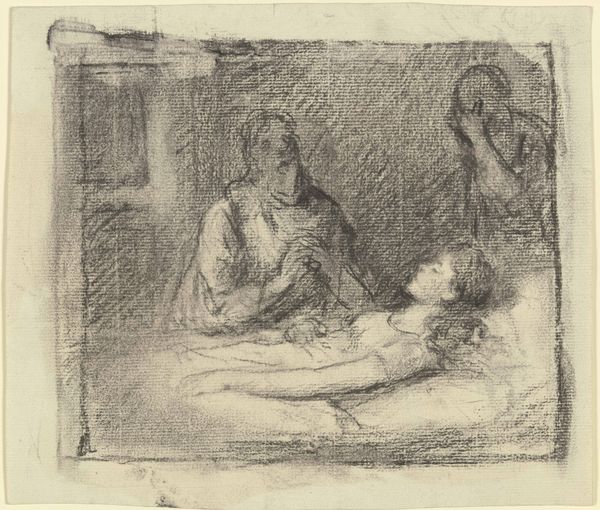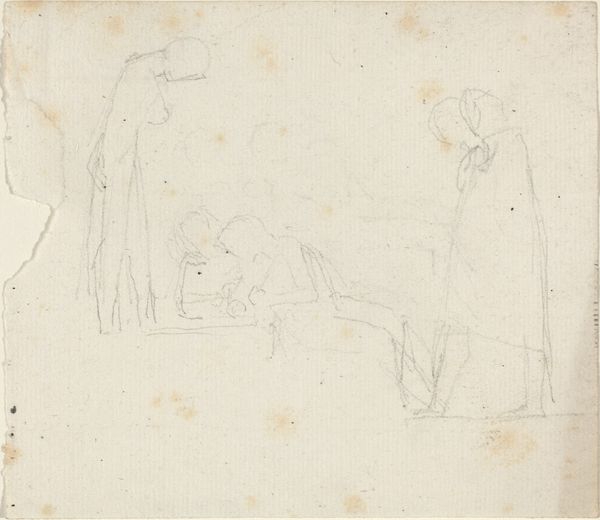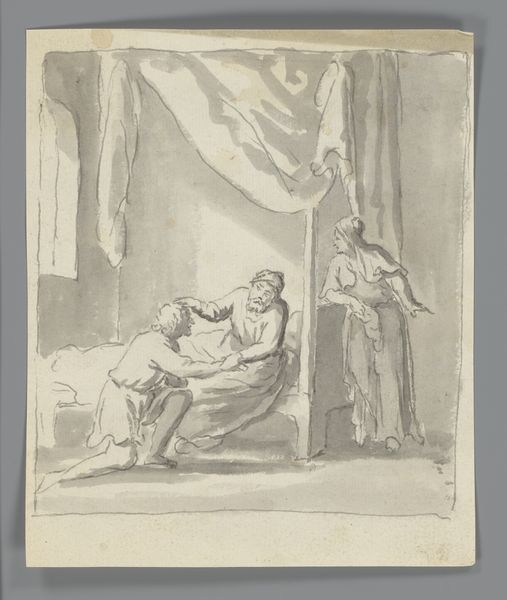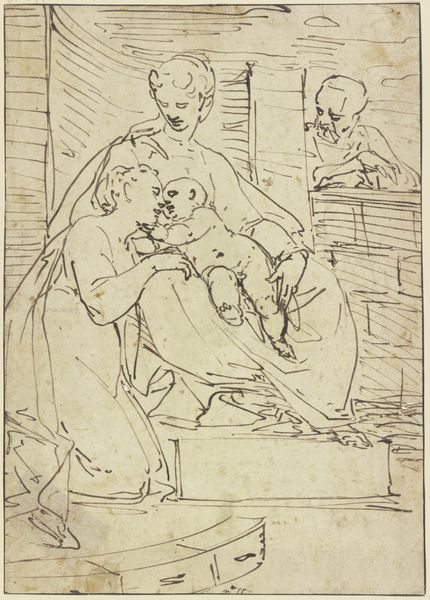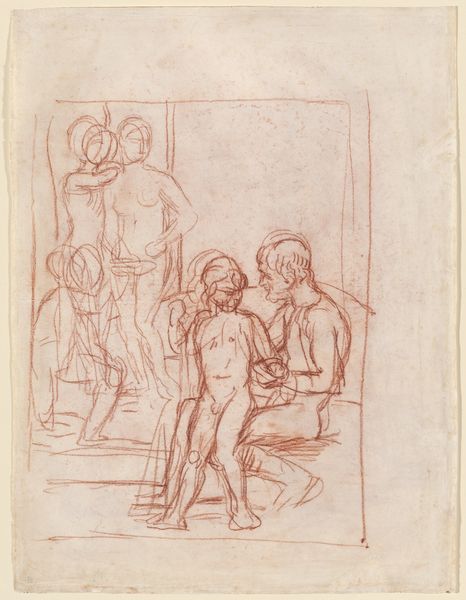
drawing, pencil
#
drawing
#
landscape
#
figuration
#
intimism
#
pencil
#
symbolism
Dimensions: 159 mm (height) x 194 mm (width) (bladmaal)
Curator: Here we have Fritz Syberg's drawing, created around 1901-1902. It's titled "Og da den gamle Mand rystede af Kulde…" which translates to "And when the old Man shook with Cold...". It's currently held at the SMK, the Statens Museum for Kunst. Editor: Brrr, just looking at it sends a chill down my spine. The stark lines and stark depiction – you can almost feel the cold radiating off the page. The scene feels intimate yet utterly bleak. Curator: Syberg was very interested in capturing scenes of everyday life in rural Denmark. He positions this drawing within the context of both Intimism and Symbolism, drawing our attention to not just the individual human experience but suggesting its representation on a more symbolic stage. You can see his investment in exploring the social dimensions of his local, Danish environment. Editor: Right. And when we focus on the *how* – the application of graphite on paper – we start to see how that feeling of immediacy and rawness translates materially. Look at the hurried quality of the linework; it doesn't shy away from revealing the under-drawing, the iterative quality that demonstrates not just an artistic intention but an affective material response. Curator: Indeed. His artistic and aesthetic decisions become inseparable from the way these social conditions play out on both an individual and larger scale. His focus extends from depicting an aging figure beset by the cold, but it can also serve to prompt societal reflection on aging populations who were suffering or didn't have sufficient social assistance available. Editor: And think about what pencil meant as a material at this moment! It was a readily available medium, and allowed more folks to dabble in art creation, beyond formal oil painting and studio art. It emphasizes access, both on Syberg's end as the maker, and now for us as viewers engaging with the image more than a century later. Curator: Syberg, like many artists of his time, used his art to advocate for social change, prompting debate within artistic circles on what responsibility they bore toward creating awareness and contributing meaningfully to the society they observed and participated in. Editor: Reflecting on this drawing through both its materials and historical setting gives me a renewed perspective, seeing the artist responding to these challenges, both aesthetically and socially. Curator: Absolutely. It reminds us that the power of art often resides in its ability to evoke empathy, making us consider our responsibilities to one another within society's larger fabric.
Comments
No comments
Be the first to comment and join the conversation on the ultimate creative platform.
